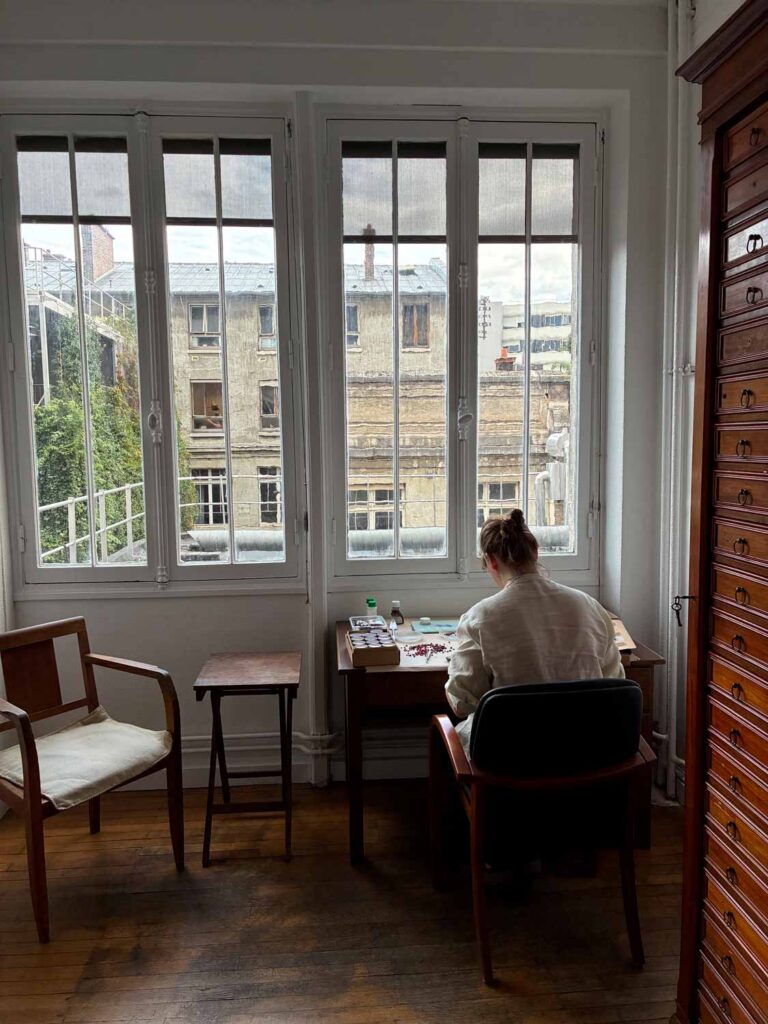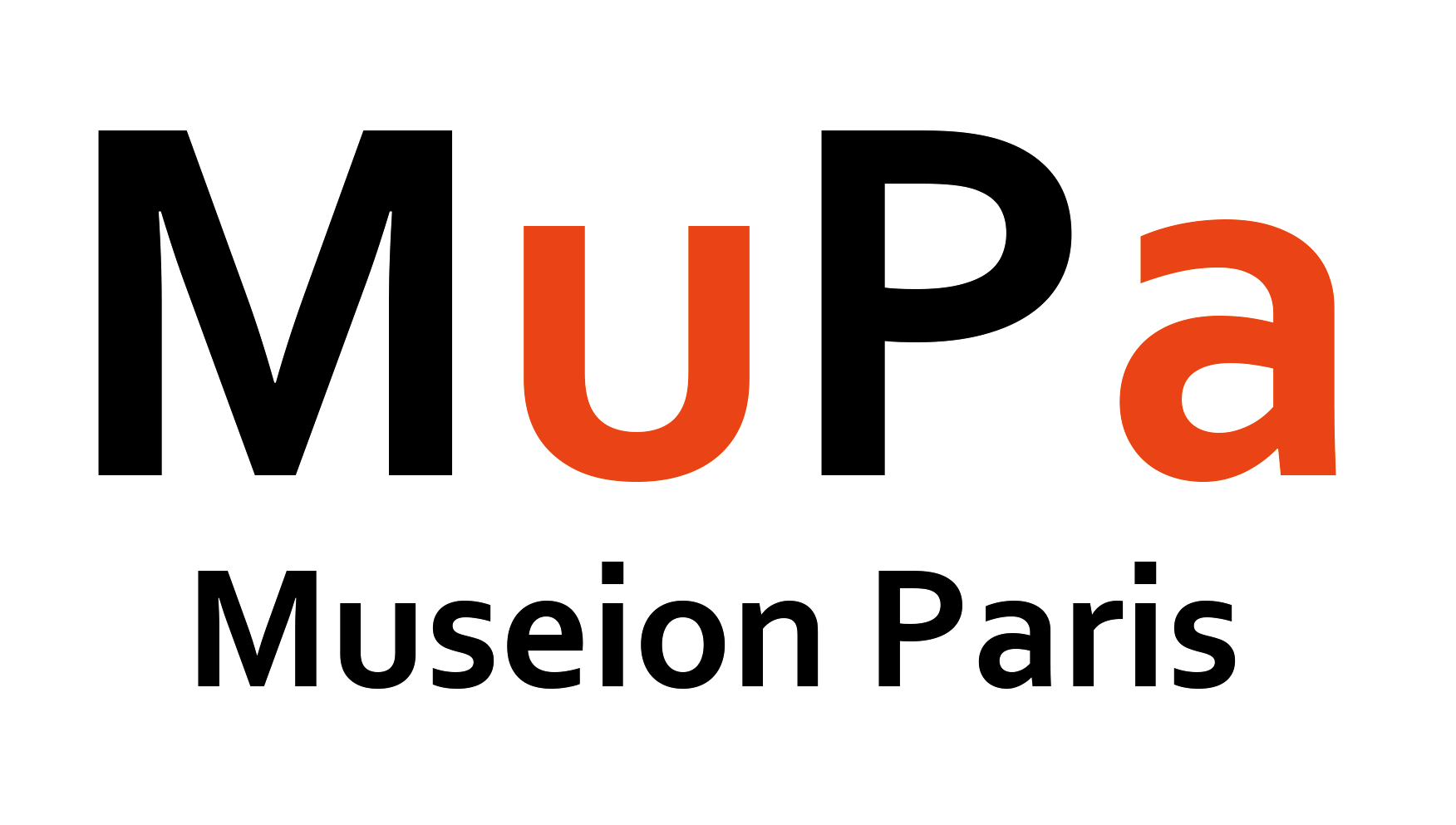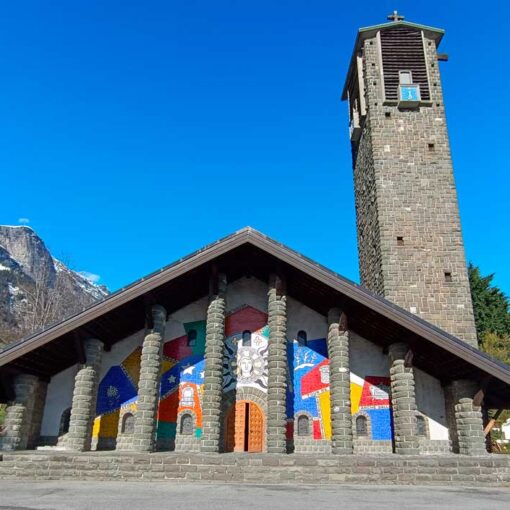
Matylda, your work lies at the confluence of various techniques: mosaic, mortar, painting… Many of these “mixed-media” approaches can be found among artists of your generation. We are particularly interested in these multidisciplinary approaches among artists who use mosaic as one of their means of expression. In your case, what path led you to explore these different mediums and combine them?
It is true that contemporary artistic practices tend toward interdisciplinarity, and that art today engages with areas of human activity that historically did not belong to the artistic domain. However, this evolution did not manifest in my case as a generational phenomenon.
During my studies at the Painting Department of the Academy of Fine Arts in Warsaw, I joined an academic environment in which painting—more specifically, oil painting on canvas—was regarded as the standard and the ultimate reference for artistic activity. Plastic issues were systematically approached through a pictorial logic, that is, within the framework of a conventional relationship between a neutral surface and the inscription of a visual sign. Although other techniques were included in the curriculum, they remained subordinate to this hierarchical conception of artistic practice.
In this context, mosaic was also considered a pictorial technique. My first experiments with this medium therefore consisted of transposing pre-existing paintings into mosaic. It was only during my studies at the Academy of Ravenna that I came to understand mosaic as an autonomous language, with its own structures, logic, and constraints. This was also a pivotal moment in my trajectory, marked by openness to interdisciplinary experimentation and hybridization of media.
Mosaic, by its very nature, operates at the crossroads of multiple disciplines. It draws from various technical fields—without being reducible to any of them. It maintains close ties with textiles, as it can unfold like a “stone carpet,” covering both movable panels and architectural surfaces—walls, domes, columns, niches—whether flat, concave, convex, or fully volumetric. Mosaic also engages in a structural dialogue with sculpture and relief, particularly due to the material nature of tesserae and the inherent three-dimensionality of their assembly. Other domains—writing, music, installation, or ceramics—can constitute anchoring points or conceptual intersections.
Thus, mosaic allows for the expansion of the traditional field of painting while imposing its own limitations. The instruction I received in Ravenna confronted me with this productive tension. During the presentation of each project, the recurring question posed by the instructors was: “Why do you want to do this in mosaic?” This question, both simple and decisive, still accompanies me today. It constitutes a form of methodological self-demand: if I cannot answer convincingly, I either abandon the project or turn to another more appropriate technique.
From this perspective, my use of mixed media is not the result of an opportunistic choice or aesthetic trend but directly stems from my engagement with mosaic. This orientation is based both on a desire for formal exploration, material curiosity, and the conceptual rigor I impose on myself.
Over time, a central element of my approach has become the active relationship with the support. A blank, neutral, and silent surface provokes a form of resistance in me. I favor contexts in which the support already contains expressive content—a beginning of a narrative to which I must respond. This initial element may be a mosaic—a frequent starting point for my works—a plaster texture, or even a drawing on stone. My work then consists of integrating, adapting, or harmonizing other elements with this first meaningful layer.
At this point, what triggers or suggests the intervention of one medium over another? Does it follow a rule or a specific ritual?
Most often, it is the mosaic that appears first. Since it must be planned in advance and the materials cut with precision, it constitutes the least spontaneous stage of the work and the one least amenable to changes. One can, of course, grout the mosaic, smooth it, age it, or cover it with paint, but the arrangement of tesserae and the rhythm it generates remain unchanged.
The mosaic also dominates other elements because of its relief, acting like a pictorial impasto—it always comes to the foreground. Thus, it usually dictates the subsequent steps. I have sometimes designed a mosaic thinking of a painting I wanted to pair with it. But once the painting was finished, it did not harmonize; it seemed foreign. I then had to remove it and wait for the mosaic itself to suggest another solution.
Alan Watts, describing the artistic process in the Far East, introduced the notions of the “unhewn block” and the “undyed silk.” These terms, aligned with the Taoist principle of wu wei, signify that the artist, in working with material, does not seek to dominate nature; they transform it, but in the direction it is already taking. The creator asks the raw block of stone: “What do you want to become? I will cooperate with you to bring you to your fulfillment.”
This approach resonates deeply with my perception of my work. And if there is a ritual in my practice, it is precisely this question. In reality, in my case, it is not even about asking, “What do you want to become?” but rather: “What are you already?” And the answer eventually comes.
Painting applied to materials not usually intended for it is therefore a characteristic of your work. On mosaic, this was even unprecedented. Later, you began working on stones, and one can undoubtedly see connections with past artistic practices. What were your sources of inspiration among them?
People have always painted on stone. Cave paintings even suggest that stone was one of the very first, if not the first, pictorial supports. In Ancient Greece, people painted on stone; the stone walls of Etruscan tombs were polychromed. Under the Roman Empire, painting on marble slabs, later integrated into house walls, was relatively common—we know such works from Pompeii and Herculaneum.
Landscape stones were also collected as early as Antiquity: the famous account by Pliny the Elder describes an agate that belonged to King Pyrrhus, whose natural patterns formed an image of Apollo surrounded by the Muses. It is also from Pliny that we get the expression Natura pictrix, “nature the painter.” I mention this because Greco-Roman antiquity has always been a significant source of love and inspiration for me.
However, painting on landscape stones is especially associated with 17th-century Italy, with artists active in Florence and Rome, such as Antonio Tempesta, Stefano della Bella, and Filippo Napoletano. The latter, court painter to Cosimo II de’ Medici, seems particularly noteworthy. For all these artists, painting on stone was a marginal, secondary activity, but Napoletano appeared to share his patron’s passion for landscape stones sincerely. He even had his own cabinet of curiosities, and his taste for bizzarries feels remarkably contemporary.
The concept of landscape stones also existed in the Far East. It is a vast subject: gongshi, suiseki, or karenasui are full-fledged artistic disciplines, now also popular in the West. I am particularly interested in Chinese “dream stones.” They were made from marble slabs from Dali quarries in Yunnan province, whose natural veins suggested mountains, waterfalls, or clouds—compositions very close to ink painting. In the case of these Chinese stones, artistic intervention was minimal, sometimes limited to simple framing and emphasizing the slab. Occasionally, a poem or a mimetic drawing of a mountain hut would be added. Some scholars suggest artists sometimes subtly corrected the stone’s natural patterns, but in ways barely visible to the viewer.
My practice lies somewhere between these two major traditions. I discovered Eastern culture later, but in a sense, it put words to something I had always carried within me. To these inspirations, I would add André Breton and his reading of stones in an alchemical-hermetic perspective—that is, the conception of stones as gamahés, signs, coded messages through which elemental or divine forces manifest.
Regarding painting on mosaic, indeed, it is not a common practice. It emerged for me when I abandoned figurative mosaic, which no longer satisfied me. This gesture drew from several sources: the tradition of coloring the interstices, certain restoration methods aimed at integrating lacunae—on the boundary between mosaic, relief, and painting. I was also intrigued by the widespread use of oil or wax to saturate natural materials and intensify their colors… Finally, the application of a thin layer of dark oil on the mosaic surface to unify the ensemble pictorially. Such “makeup” is frowned upon by mosaic purists, who believe the surface should not be retouched. For me, it is a natural gesture: when one medium’s possibilities are exhausted, I call upon another.
I thought: painting on a mosaic may seem strange to some, but no one is surprised to paint on fabric or to polychrome a sculpture. Here we return to the question: what is a mosaic, fundamentally? It is rare for an artist to paint on a textile they themselves have woven. Working this way is therefore, in a sense, a double effort, but—put differently—also a double joy.
Humans occupy a prominent place in the representations you create on mineral surfaces, even if animals, sometimes fantastical, also appear. They evolve in an atmosphere that could be described as suspended, timeless, or at least difficult to date. This distance does not prevent viewers from being moved by your work, as one paradoxically senses great proximity and empathy with these various protagonists. How are the choices of representation ultimately made in your works?
As I said, I do not work on a white background, but on a support largely already defined from the start. The choice of representations therefore stems from a dialogue with this support. This process is meditative in nature: it is about penetrating the observed space, losing oneself in it.
In the case of stones, this process resembles Breton’s visionary mineralogy; we could also, in a broader perspective, invoke Alan Watts’ words and speak of “peripheral vision”—a visual exchange in which images appear spontaneously before the viewer’s eyes, demanding to be painted.
Of course, I have my own library of favorite motifs—my computer is filled with mood boards, photos, paintings, film stills, and all kinds of materials I find interesting and constantly collect, independently of any project.
When an idea arises, I check if I already have something similar in my archives. Sometimes I do, sometimes I must search elsewhere or invent anew. The support responds to me each time: it accepts or rejects the proposed motif. That is why I constantly feel that the character or animal chosen has always been there—it was merely waiting to reveal itself.
In 2015, you created the installation Aquarium, made of various panels of mosaic, mortar, and paint. Fish and human beings were depicted. The installation placed the viewer in a strange atmosphere because, of fish, human, or spectator, it was not clear who was in the aquarium, nor who was observing whom. In your subsequent works, the chromatic mimicry of your painted interventions on veined stones continues to blur the lines, leaving no clearly identifiable protagonist within each of your works. Can you explain the nature or origin of your attraction to these ambiguous situations, which seem to be a constant in your oeuvre?
Regarding chromatic pictorial mimicry, it stems from a deep respect for the support, to which I try to yield priority—the pictorial layer only plays a secondary role, serving the surface. The resulting work is, in a sense, a team effort, a four-handed concert.
I strive not to dominate the surface with my intervention. I also aim to preserve the anonymity of the figures represented as much as possible. My work involves constant vigilance, an inner tension between the need for narrative and the fear of revealing too much.
Concerning ambiguity in a broader sense, it is difficult for me to pinpoint the source of these fascinations. I deliberately seek to move away from illustrativity, toward which figurative painting like mine naturally tends. That is why I try to ensure that, beyond the surface of these representations, often pleasing to the eye, there hides something elusive. The interplay with form also plays an important role, even though in my works it is not an end in itself but appears more as a secondary element. The rest relies on intuition, and presumably also on my introspective character.
Find the presentation of Matylda Tracewska’s residency at the National Museum of Natural History.

